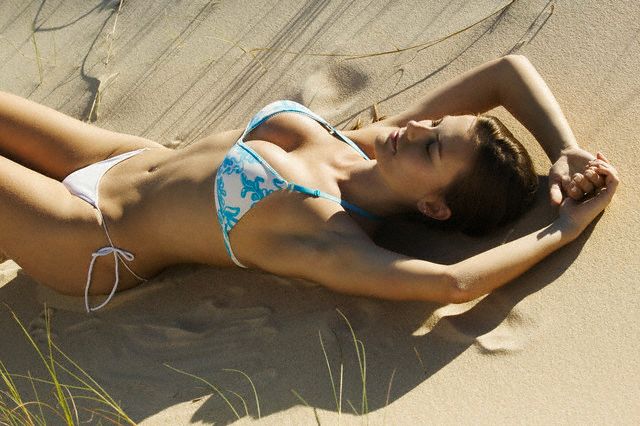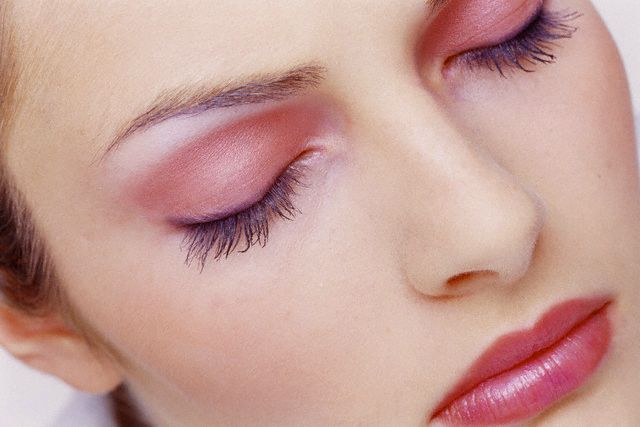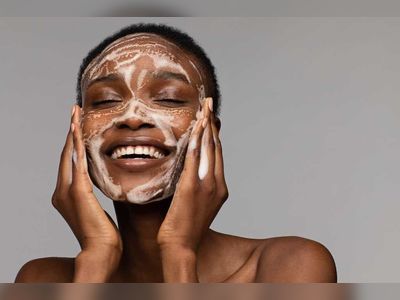
If you like to spend as much of the summer as possible outdoors, soaking up the sun. But you must take a moment to consider this: The incidence of melanoma in women aged 30 to 44 is on the rise. Since 1973, the rate of melanoma diagnosed in this age-group has almost tripled, says Martin Weinstock, M.D., Ph.D., professor of dermatology at
If the prospect of cancer isn't enough of a deterrent, keep in mind that sun exposure is the cause of almost all wrinkles and age spots. "When it's not exposed to the sun, skin shows signs of age at a very slow rate," says Victor Neel, M.D., director of
Lounging by the Pool or on the Beach

If you're going to park yourself on your beach towel for hours on end to check out all the semidressed dudes, you have to take serious measures to block out those UV rays. One move you likely haven't tried before is using an antioxidant moisturizer before you apply your sunscreen. Doctors believe that topical antioxidants may help prevent skin-aging and cancer-causing free radicals from forming on sun-exposed skin, explains NYC dermatologist Anita Cela. You can find antioxidants like vitamins C and E and green tea in lots of different face and body lotions, or try one of the new sunscreens that are already laced with them. We like Coppertone Endless Summer Sunscreen Lotion, $10, and Clinique Body SPF 30 Sun Block, $16.50. It's also a good idea to hang out under an opaque umbrella, especially during the biggest no-no sunning hours of 11am to 2pm.
Sun safety extra: According to the Skin Cancer Foundation, UV rays that are reflected off water, sand and even cement are up to 90 percent as strong as those radiating directly from the sun itself.
Sweat, Sun and Fun

Bodysurfing waves, playing tennis or biking a few miles are all amazing for your body, but these activities make it harder to shield your skin from the sun. The mix of sweat and the outdoor elements wears away your sun protection and can irritate your skin. Your first line of defense: slathering up ahead of time. It takes most sunscreens 15 to 20 minutes to penetrate the epidermis, so to prevent damage, get into the habit of applying your lotion well before you leave the house.
Also, since water, sweat and high temperatures can degrade the effectiveness of your block, it's important to apply more at least every two hours to maintain the optimum level of protection. And use a formula that's waterproof (if you're going swimming) or sweatproof (if you're playing tennis or working out). One caveat: Always reapply after toweling off; that terry cloth is absorbing more than just sweat and water. Two new longer-wearing sunscreens to try are Banana Boat Surf Sunblock SPF 30, $7, and Hawaiian Tropic Ozone Sport SPF 60+, $10.
Sun safety extra: If you apply the correct amount of sunscreen every two hours as recommended (an ounce for your body and a teaspoon for your face and neck), you should almost drain a standard 4-ounce bottle in six hours.
Summer and the City

When it comes to your body, keep in mind that a thin T-shirt offers an SPF of 4 to 8, and only denser fabrics (think denim) can truly protect you, says Dr. Cela. To test your clothes, hold them up to the sun. If the light shines through, they won't provide enough protection. To prevent damage from UV exposure, Dr. Neel recommends using a sunscreen or moisturizer with built-in SPF before you dress. A good affordable option is Lubriderm Daily UV Lotion, $8.
Sun safety extra: Carry a small tube of sunscreen in your purse all season, so if your guy suddenly suggests a picnic in the park, you'll be prepared. A totable one: Banana Boat Faces Spot Stick SPF 30, $5.50.
Melt-Proof Makeup Moves

- Go for creamy hues. Play up your cheeks with a sheer cream blush since it stands up better to water and sweat and blends easily over sunscreen. Try L'Oréal Touch On Color, $9.95.
- Do double-duty with waterproof mascara. First use it to line your eyes with a thin liner brush, then curl and coat lashes twice, suggests celebrity makeup artist Charlie Green. Try Revlon Lash Fantasy.
- Beautify your brows. When makeup is minimal, a pair of well-defined brows makes a major impact. Splurge on a professional shaping, then maintain the look at home with weekly tweezings. Lightly fill in brows with a blond pencil, then set the color with a clear gel like Cover Girl Natural Brow Mascara, $5.
- Lose the heavy lip colors. A better choice? A light pink moisturizing lipstick with sunscreen.











